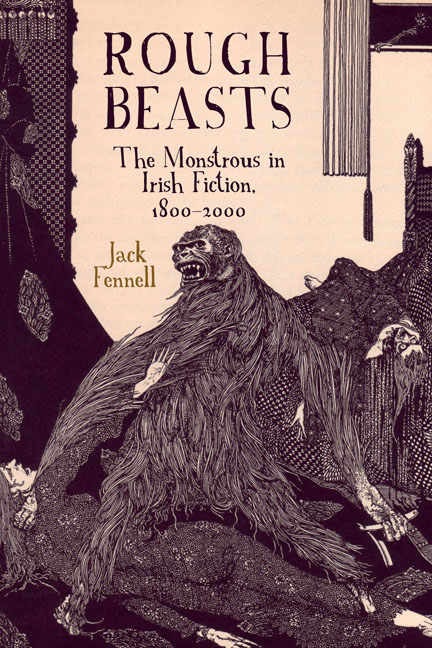Book contents
- Frontmatter
- Contents
- Acknowledgements
- 1 Introduction: In Defence of Fear
- 2 We Dare Not Go A-Hunting: Fairies, Deep Time, and the Irish Weird
- 3 Harbingers of Hunger: Famine, Cannibalism, and Hunger-Demons
- 4 From Lore to Law: Malevolent Magic and Spiritual Warfare
- 5 Ghosts, Narrative, and Noumenal Reality
- 6 Just Sign Here: Faustian Pacts, Demons, and Chaos
- 7 The Undead Generations: Zombies, Vampires, and the Corporeal Undead
- 8 Breeding Breaks Out: Shape-Shifters, Cryptids, and Cunning Animals
- 9 Haunted Spaces and Monstrous Lairs
- 10 Conclusions
- Bibliography
- Index
10 - Conclusions
- Frontmatter
- Contents
- Acknowledgements
- 1 Introduction: In Defence of Fear
- 2 We Dare Not Go A-Hunting: Fairies, Deep Time, and the Irish Weird
- 3 Harbingers of Hunger: Famine, Cannibalism, and Hunger-Demons
- 4 From Lore to Law: Malevolent Magic and Spiritual Warfare
- 5 Ghosts, Narrative, and Noumenal Reality
- 6 Just Sign Here: Faustian Pacts, Demons, and Chaos
- 7 The Undead Generations: Zombies, Vampires, and the Corporeal Undead
- 8 Breeding Breaks Out: Shape-Shifters, Cryptids, and Cunning Animals
- 9 Haunted Spaces and Monstrous Lairs
- 10 Conclusions
- Bibliography
- Index
Summary
In Chapter 1, I outlined what I see as key characteristics of the horror genre. Regardless of temporal setting, the depicted world of a horror story is our world – it must be, otherwise the essential component of Fantastic/ Grotesque/Absurd estrangement would not work. In a horror story the usual chain of cause-and-effect is disrupted by that estrangement, revealing previously unknown aspects of the world (or else demonstrating that the world is fundamentally unknowable); over the course of the story, the protagonist will usually move from a default position of disbelief, similar to the reader’s, towards a point of uncritical acceptance. Usually, horror protagonists will progress along a continuum of negative expectant emotions as they learn more about the supernatural threat bearing down on them, from anxiety to fear and finally – if they do not manage to extricate themselves – to despair and a presumably violent end.
Throughout history, these characteristics have been countered by cultural moves to ‘tame’ the monster. According to Stephen Asma, during the mediaeval period in Europe the shift from polytheism to monotheism necessitated a re-evaluation of monsters in relation to the divine – there was only one God, the reasoning went, and that God created various horrifying ‘mundane’ animals, so presumably He created monsters too, or at least permitted them to exist (Asma 2009, 64). The monster then became a symbol of pride and transgression against God's law, and thus an object of God's justice (69); Asma pinpoints the changeover in Beowulf (and thus, the late tenth/early eleventh century), which marks the transition from “the last gasp of pagan hero culture” to a Christian world-view in which monsters could be reconciled with goodness if they repented (100). Obviously, this flies in the face of what a monster is: as summarised in Chapter 1, monsters are strange, in that they represent otherness taken to an almost unintelligible extreme; they are amalgams, in that they confound rigid category divisions; and they are necessary, because they are permanent fixtures of the human imagination anyway. Thus, monsters are not domesticable, because they exist to break things.
Moral Monsters and Meta-Monsters
Horror fiction thus plays an important role in historiography, even on the superficial level of moral panic.
- Type
- Chapter
- Information
- Rough BeastsThe Monstrous in Irish Fiction, 1800–</I>2000, pp. 236 - 262Publisher: Liverpool University PressPrint publication year: 2019



